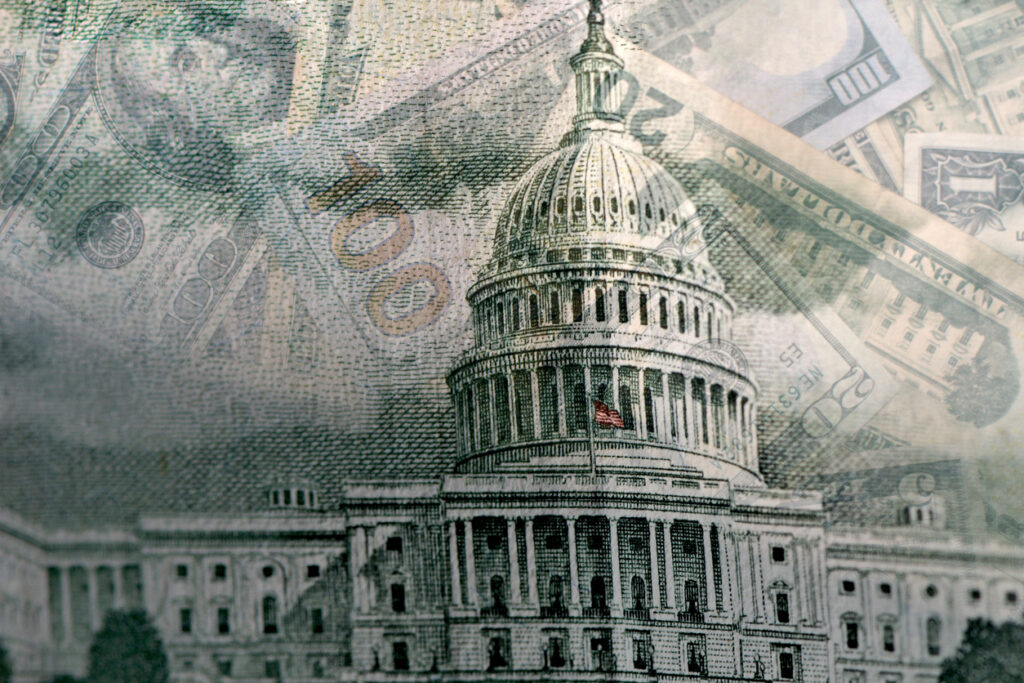Today I am revisiting my very first Scholarly Kitchen post from December of 2013. In that post, I was commenting on the White House Office of Science and Technology Policy (OSTP) Public Access Memo, known now as the Holdren Memo.
The Holdren Memo called for all federal agencies with over $100 million in annual R&D spending to develop public access policies for journal accepted content that reports on federally funded research. In a nutshell, it required large funding agencies to replicate policies already mandated by Congress at the National Institutes of Health (NIH).
My 2013 post attempted to find a definition of “federally funded,” to ascertain the impact of the memo. Definitions from the agencies at the time were broad, and I complained that there is no way for publishers to validate claims from authors that they had federal funding.
Fast forward 11 years as the year-end deadline looms for final policies at agencies to comply with yet another OSTP memo, this time the Nelson Memo. The Nelson Memo eliminates the 12-month embargo allowed in the Holdren Memo and widens the scope to all federal agencies.
Wading even further into the fray, the NIH draft policy now open for comment also requires the following from authors: a “royalty-free, nonexclusive and irrevocable right to reproduce, publish, or otherwise use this work for Federal purposes, and to authorize others to do so. This grant of rights includes the right to create derivative works and make the final, peer-reviewed manuscript publicly available upon the Official Date of Publication.”
The 2008 NIH public access policy states that it applies to “NIH supported researchers,” and “to any peer-reviewed manuscript that arises from direct funding from the NIH and is accepted for publication in a journal”. The policy goes on to state “For example, a peer-reviewed manuscript that describes an infrastructure project that was NIH funded may be subject to the Policy, even if not reporting research findings.” Clear? No, not really.
So does the new draft policy make it any clearer? Let’s see:
The policy is “intended to make available knowledge generated from NIH-supported discoveries. Accordingly, the NIH Draft Public Access Policy applies to any Manuscript accepted for publication in a journal that results from funding by NIH in whole or in part. NIH intends to clarify in FAQs that using NIH resources, such as datasets available through NIH repositories and physical resources and infrastructure supported by the NIH, when no NIH funds were used for the work upon which the Manuscript is based, does not subject a resulting Manuscript to the NIH Public Access Policy. However, NIH notes that some programs at NIH and specific agreements may add in such a requirement independent of the NIH Public Access Policy’s scope.”
Have we gotten anywhere in 11 years? It seems not. The definition is still left to “we will know it when we see it,” and there still remains no way for a journal to verify that the author has direct funding as it applies to the manuscript accepted at the journal. As the stakes continue to rise for the journals that accept papers (and in the NIH case for the authors required to hand over rights to alter and create derivatives to the government), the definition of federally funded—“in whole or in part”—remains vague.

What Does “Federally Funded” Actually Mean?
My years of avoiding all things Open Access (OA) are clearly over. We have been hearing about possible OA mandates for all federally funded papers for almost as long as we have been hearing that print “will be dead in 5 years”. Now that we are on the verge of a mandate and I have become our in-house expert on the topic, there is one detail that continues to confuse me.
Under inevitable mandates, what constitutes a “federally funded” paper?
The OSTP public access memo does little to define what it would consider a federally funded paper. It does mention “research that directly arises from Federal funds, as defined in relevant OMB circulars (e.g., A-21 and A-11).” I thought maybe those circulars would be helpful but I was wrong. One defines financial reporting for federal programs at universities and the other appears to be the actual federal budget.
I turned to the NIH as the likely model for others. Their OA mandate applies to the following manuscripts:
- Any direct funding from an NIH grant or cooperative agreement
- Any direct funding from an NIH contract
- Any direct funding from the NIH Intramural Program
- Authored by an NIH employee
Now we are getting somewhere. What do they consider direct funding? Here is what the NIH says about that:
A direct cost is any cost that can be specifically identified with a particular project, program, or activity or that can be directly assigned to such activities relatively easily and with a high degree of accuracy. Direct costs include, but are not limited to, salaries, travel, equipment, and supplies directly benefiting the grant-supported project or activity. Most organizations also incur costs for common or joint objectives that cannot be readily identified with an individual project, program, or organizational activity. Facilities operation and maintenance costs, depreciation, and administrative expenses are examples of costs that usually are treated as F&A costs. The organization is responsible for presenting costs consistently and must not include costs associated with its F&A rate as direct costs.
So, everything. But I still have questions.
Some stuff is cut and dry — NSF gives you money for a research project and you write a paper about the project and your findings. This seems pretty clean. If you revisit that data in say 10 years and use some of it in a new paper, is that new paper federally funded?
If you used time on DOE equipment, do the results of that work count as federally funded?
If a federally funded fellow assists in some analysis on the data, is that paper now federally funded?
If you use equipment or get data from a state transportation department lab and that lab is funded by the Department of Transportation, does that count?
What if 95% of your money comes from industry and only 5% from the government? What if it’s 98/2?
The U.S. House of Representatives Science committee has a draft bill in discussion called Frontiers in Innovation, Research, Science, and Technology Act of 2013 or FIRST. It is basically the bill that re-authorizes the America COMPETES act. FIRST echoes the OSTP memo with two important differences:
- Accepted manuscripts must be made publicly available no later than 24 months after publication with the possibility to extend that period by 6 or 12 months if the agency feels that any stakeholder would be “uniquely harmed” by a shorter embargo, and
- The public access policy applies to manuscripts that results from research funded in whole or in majority part by a grant from a Federal science agency.
While this is still a draft bill and is certainly moving at a glacial pace given the lack of any work being done in Congress, if passed, this would raise the question — how do we know what percentage of a paper is federally funded?
We need to ask the authors, of course. More submission questions to come! And then we must take their word for it. With the exception of trying to look up grant numbers on the websites of individual agencies, there is no easy way to validate an author’s claim to federal funding prior to publishing the paper. Even post-publication, we would only know there was a problem if the agencies are actually digging through FundRef [Editor’s note: now the Open Funding Registry] to see what their money has produced, and if they report any discrepancies to the publisher.
Lawmakers want to use peer-reviewed manuscripts as a way to show taxpayers where their money goes. Federal agencies are responsible to Congress for reporting productivity and will need a lot of published papers in order to justify more tax dollars. Authors, who want to take advantage of OA that comes without fees will want to maximize listing federally funded research dollars now that publishers are forced to make those papers publicly available. Might an author feel compelled to claim federal funding of a nominal amount when perhaps they might have left that acknowledgement off in the past?
What about accountability? Where are the checks and balances? What is the rationale for setting funding thresholds? Is it in any way data-driven, or just a randomly chosen number? If publishers are being asked to give away content that today can be sold, shouldn’t they have a voice in these decisions as part of the public-private partnerships envisioned by the OSTP?
Is there even a proposed system to validate that funding claims are real? Should researchers be required to keep careful timesheets and spending records to delineate the specific percentages of salary and funds spent on each individual experiment, and then collate those records with the specific data included in a paper? Who should have access to these records? Funding agencies? Publishers?
Without clear, verifiable procedures and rules in place, these mandates threaten to become either a burden on researchers who must provide a mountain of paperwork evidence or essentially unenforceable — if OA requirements are to be based on rough guesses, the easiest path for a researcher is to always claim that only 49% of any project was federally funded, and be relieved of all responsibilities.
Discussion
10 Thoughts on "Revisiting — What Does “Federally Funded” Actually Mean?"
To be a bit pernickety and following the exact wording “Accordingly, the NIH Draft Public Access Policy applies to any Manuscript accepted for publication in a journal that results from funding by NIH in whole or in part. “ it would appear to me that most journals are not funded by the NIH. Authors and Institutions may be. But what it says is “publication in a journal that results in funding by…”. The wording does not follow their intent. The manuscript maybe supported, the authors may be supported, the authors institution may be supported, but the journal is not. There in lies our problem
I think this will get cleaned up with a copy edit for the final policy. “any Manuscript, which is accepted for publication in a journal, that results from funding by NIH in whole or in part.”
Perhaps the answer for publishers is to assume anything that the authors disclose as having any federal funding is under a mandate unless *all* of the authors and their institutions can prove it was not?
This is the practical answer — it should be considered federally funded if the authors cite federal funding in the paper, and that’s how journals are going to handle it.
Of course the problem with this is that authors regularly overcite their funding sources. They want to look productive when it comes time for renewal or applying for the next grant, so the more papers they can list as coming out of the current (or previous) grant, the better. The NIH has specifically asked authors to cut it out, but I suspect this has had little impact on the practice:
https://nexus.od.nih.gov/all/2023/10/05/reminders-about-when-to-cite-an-nih-grant-in-a-paper-overcite-oversight/
The question I get most from researchers when we talk about this has to do with eligibility. They explain that they have $$ from some sort of NCI or NIH program for things like fellows or biostatisticians or something like that. When they ask me if that grant forces compliance, I tell that I have no idea. The actual manuscript may have been reviewed by a biostatistician for an hour that is funded by the NCI as a shared resource for an entire research center.
I’m curious Angela, do you suggest they ask their research/grants office? They didn’t personally get the money. The award was processed by the university and the institution signed off on the terms and is responsible for compliance reporting.
And, David, yes. But, if all the grants require OA because it’s multiple federal funders, overciting isn’t going to activate the OA. Just citing one would do it.
Right, but if all the work was done on a grant by a private/non-US government funder without an OA mandate, then one overcitation to a federal funder being added would move things into OA territory.
No. I tell them that I can’t answer their question. I would have no idea where to refer them for an answer.
The answer to all “do I need to comply with XYZ” questions for grants is the university office that oversees grant compliance since the real question is “did the university commit to comply with XYZ?” 🙂
Though of course your answer also works and means you aren’t getting in the middle of things!



